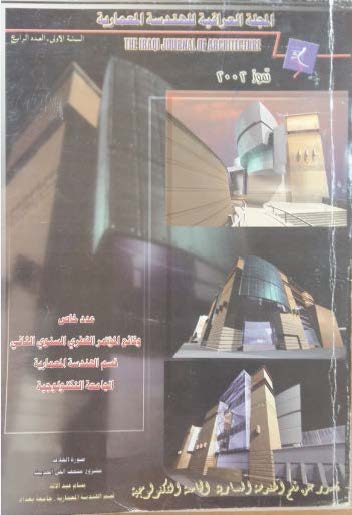The Relation between Spatial Organization of the City and Its Function
Abstract
The city , is one of the expanded and most complex systems that the human beings
ever known, as it exist through continuous development and changing process through
time. Each generation extends , substitutes , re-arranges and adopts what it inherits
before passing with to the new generation, therefore the city can be called in a
moment of time as a group of dynamic processes more than being constant facts. The
city is a product of a large number of resolutions within its reality, having the small
and large measurement to be connected with the social structures and ideological
constructions of its occupant, that community creates over time, but remains obscure
to the individuals at any moment.
The obvious similarity of the cities urban structures overtime and in different
parts of the world, indicates to the existence ofmain types ofspatial organization,
beyond different structures, which refer to the possibility of building theoretical
concepts regarding a spatial theory of the city, through gaining access to the basic
logic in creating the physical structures of the city'more over to explain the relation
between the city form and its function .
The research based on the concept of spaoe in dealing with the urban structure
of the city and considered to be the essence in constructive logic, in more specifically
building distribution creates a continuous system of spaces that connect buildings in a
spatial system that reflects the structure ofthe city, so reaching out to the language
that expresses the spatial organization, which requires illustration of the common
spatial properties ofthe cities and their differences
The research idea, based on these concepts, regarding the space as might
provide a common language to the different city forms and some is the relation
between the city structure and the method that perlorm its function with
Thereby, these concepts were examined in Al - Khadimya fabric, regards as a
complete physical system that testified great transformation in its physical, social and
functional structure through time.
The research, has reached out to explain the relation between the changing in
the spatial organization properties of the urban fabric and the natural growh ofthe
land use.
Downloads
Copyright (c) 2019 wahda shuker Al-Hangaweh

This work is licensed under a Creative Commons Attribution-ShareAlike 4.0 International License.
You are free to use the work, but you have to attribute (refer to) the work in the manner specified by the author or licensor (but not in any way that suggests that they endorse you or your use of the work).
IRAQI J. ARCHIT & PLANN grants you the right to publish the metadata of the journal, it's issues and articles under the terms of the Creative Commons Attribution-ShareAlike 4.0 International License.
Author(s) hold the copyright of their aricles without restrictions. However, IRAQI J. ARCHIT & PLANN holds publishing rights for articles and their revisions once the article is published.
Authors can archive pre-prints (ie pre-refereeing) and post-prints (i.e. final draft post-refereeing) versions of the work they submitted to IRAQI J. ARCHIT & PLANN using non-for-profit open-access servers whether on author's personal website and/or institutional repositories including the university or research center where the author work.. For post-prints, only the IRAQI J. ARCHIT & PLANN’s as-published PDF version is permitted and the published source (IRAQI J. ARCHIT & PLANN’s website) must be clearly acknowledged within the archiving webpage.






